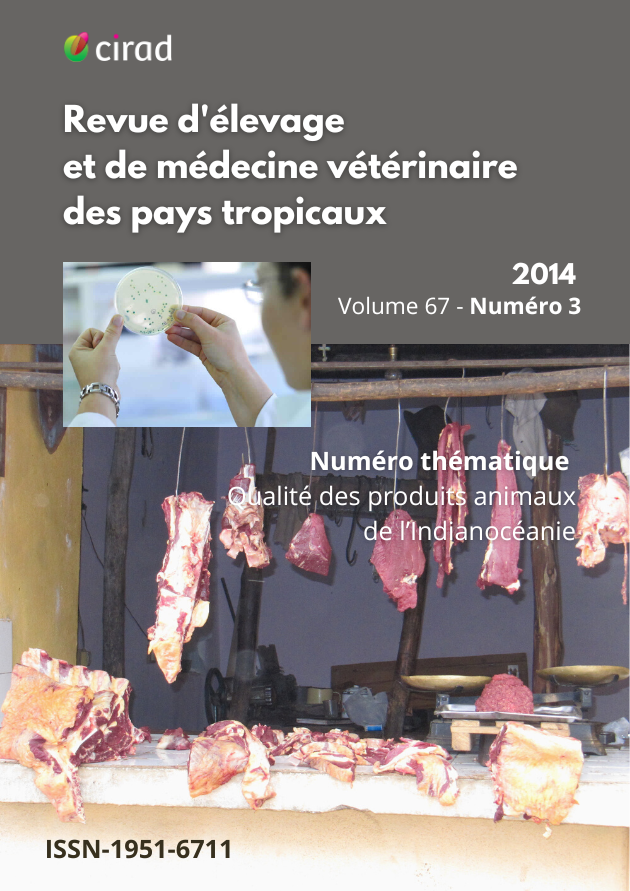Microbiological and physico-chemical characterization of the Rodriguan chinese sausage
DOI:
https://doi.org/10.19182/remvt.10170Keywords
Pork, Sausage, Food processing, Food quality, Microbiology, MauritiusAbstract
Rodrigues Island is a dependency of the Republic of Mauritius and is located at about 653 km northeast of it. Pig fattening is an important livestock activity in Rodrigues and pork is the most widely consumed meat (1). It is reported that Rodriguan pork has special sensorial attributes, firstly because pigs are fed with traditional starchy crops such as cassava, banana and sweet potato, and kitchen wastes, and secondly because of the rearing method which is mainly an outdoor system. In a previous study (2), the range of processed products made from pork and their processing techniques were described. The Rodriguan chinese sausage, a traditional dry-cured pork-based product, is one of the most popular products and is considered as an authentic product of Rodrigues (Figure 1). It could be eventually promoted and marketed with an appellation such as the geographical indication label. However, from a food safety standpoint, there is a lack of information on the microbiological and physico-chemical characteristics of the finished product.
The main objective of this work was to determine the microbiological and physico-chemical characteristics of the Rodriguan chinese sausage with a view to establish the standard profile of the product. The study also aimed to identify weaknesses and make recommendations to improve safety, quality and shelf life of the product.
Sausages were sampled thrice from ten random family-owned processing units in seven villages and retail outlets of Rodrigues from November 2013 to January 2014. At each outlet, two sausages were taken and air-transported in sealed plastic bags within two days to the Faculty of Agriculture laboratory for analysis. All analyses were carried out using ISO (International Organization for Standardization) protocols.
The total viable count and lactic acid bacteria count ranged from 7.8 to 8.11 and from 7.08 to 7.50 log10 CFUg-1, respectively (Table I). The total coliform and Staphylococcus spp. counts were about 3 log10 CFUg-1 each. Neither Escherichia coli nor Salmonella spp. were detected in the samples analyzed. The water activity, pH and lactic acid content of the sausages fell within the range of values typical of dry-fermented sausages (Table II). However, significant variations between samples were noted with regard moisture, protein, fat and ash contents. Similarly, water activity and pH values showed marked variations between the sausages. In contrast, no significant differences were noted in the L*, a* and b* color attributes as defined by the Commission internationale de l’éclairage (CIE).
Results confirmed that the Rodriguan chinese sausage satisfies the criteria of dry-cured raw meat products (3) and is overall a fairly safe and stable product. However, significant variations exist in its physico-chemical and microbiological characteristics probably due to variations in processing by the different artisans. There is thus a need to standardize the processing steps so as to improve the microbiological quality and safety of the sausage.
Downloads
Downloads
-
Abstract1211
-
PDF385
Received
Accepted
Published
How to Cite
Issue
Section
Categories
License
© V.K.Ah Kang et al., hosted by CIRAD 2014

This work is licensed under a Creative Commons Attribution-NonCommercial-ShareAlike 4.0 International License.








